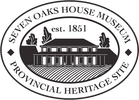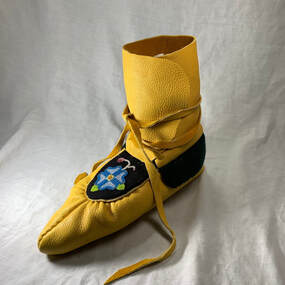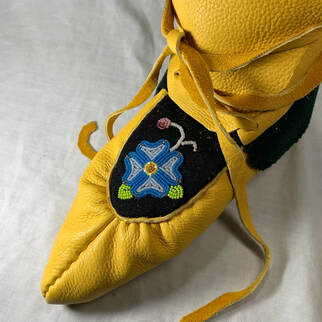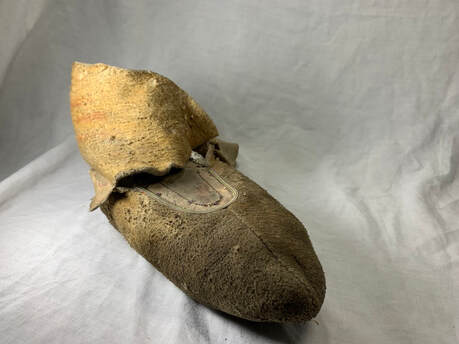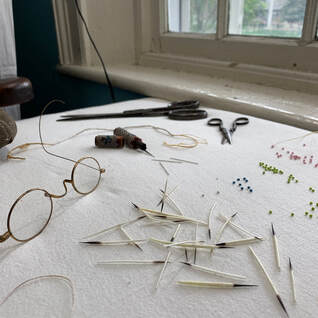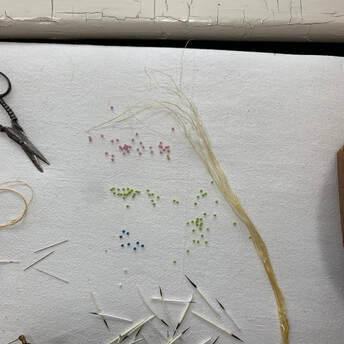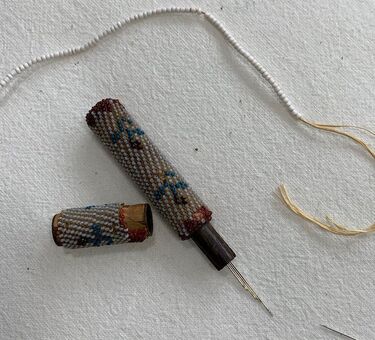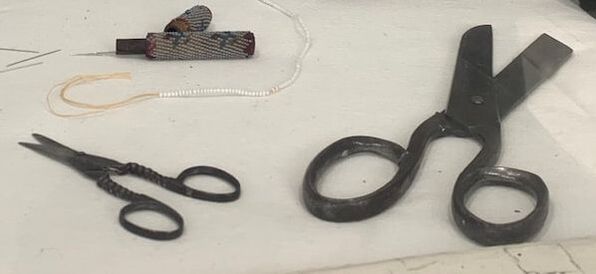Detailed text about dining room goes here
MoccasinThis style of pointed-toe moccasin was worn by almost everyone in the early days of the Red River Settlement. This style of shoe was made by Metis, Anishinaabe (Ojibwe) and Ininew (Cree) women for their families, and for trade.
This style of tall moccasin was made for walking outdoors, almost like hiking boots. Other styles that look like slippers would have been made to wear to dances or around the house. Modern reproduction using antique beads. |
MoccasinThough we have plenty of beautify and intricately decorated moccasins, we chose to display this plain and well-loved moccasin for two reasons: the first being conservation reasons, as light can damage artifacts when displayed without proper protection, and the second being that with this moccasin allows you to see how moccasins in this period were constructed in Red River.
These old moccasins were once decorated with purple and red quillwork made from hand-dyed and processed porcupine needles. The quillwork was trimmed with delicate dyed horse-hair piping. Both the quills and the horse hair have long-since deteriorated, damaged either by light, insects or animals, or by improper handling or storage. This moccasin was made of traditional "brain tanned" leather and sewn using sinew, a thread-like product produced from the tendons of animals like deer or bison. When compared to the leather of the modern moccasin above, the differences are stark with the tannin found in the brain giving this leather a suede-like texture and a muted colour. c. unknown |
Sewing MatierialsSinew, quills, and glass beads:
Before thread was readily available in the Red River Settlement, sinew, an animal product made from dried and stretched animal tendons, was used to sew together both utilitarian items and beautiful works of art featuring beadwork and quillwork. c. modern Eyeglasses: People sometimes needed a bit of extra help seeing the tiny details of sewing work. These eyeglasses have gold-coloured oval frames and clear glass lenses. c. late 19th century |
needle caseBeaded needle case:
This English needle case is made of wood and wrapped with tiny seed beads on wires. The same beads were used here in a very different way for Métis beadwork. c. mid-19th century "Trade" beads: Glass beads like these were made in France and Italy, and imported in large quantities for trade by the Hudson's Bay Company. c. early 19th century |
